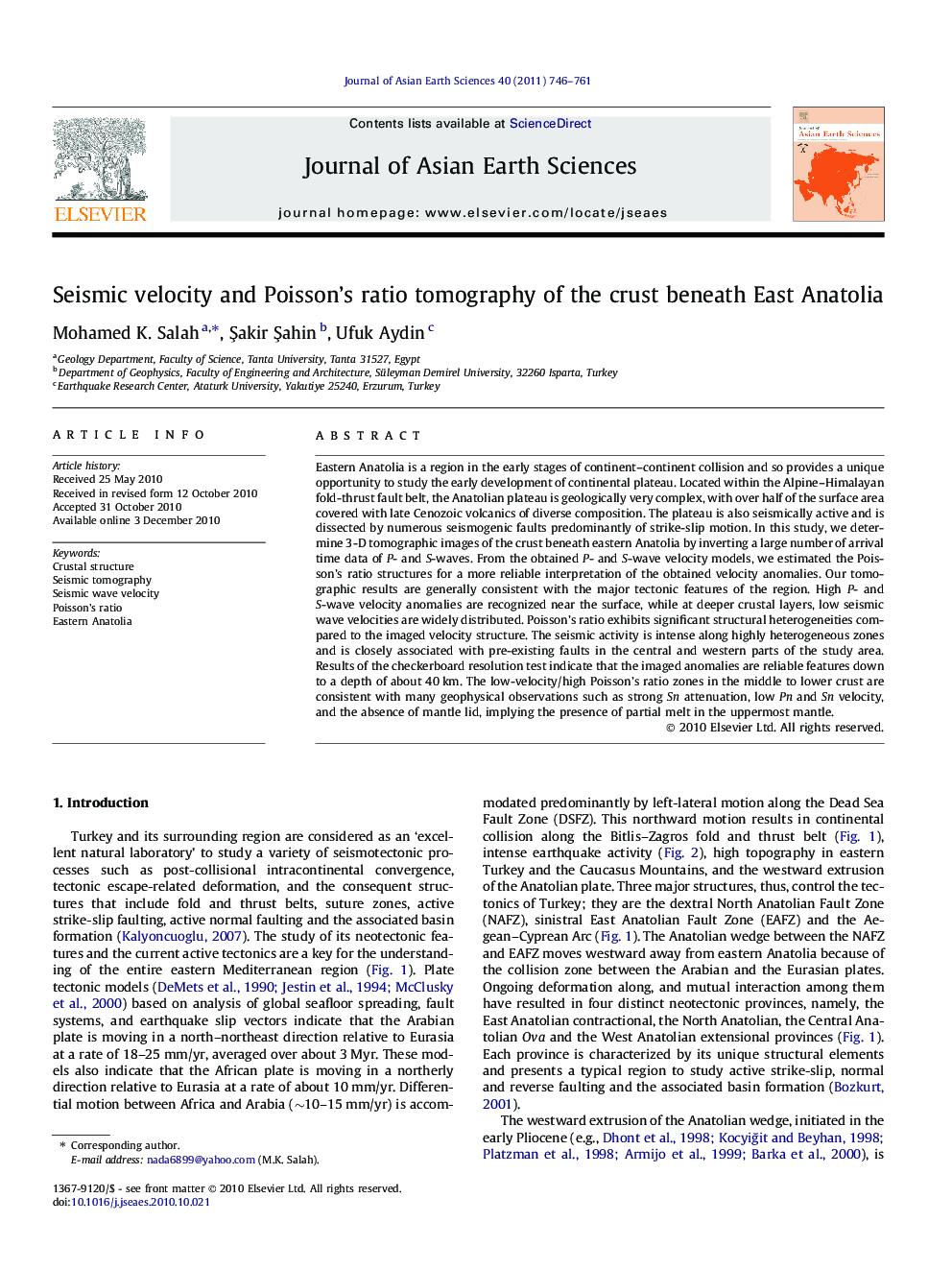| Article ID | Journal | Published Year | Pages | File Type |
|---|---|---|---|---|
| 4731771 | Journal of Asian Earth Sciences | 2011 | 16 Pages |
Eastern Anatolia is a region in the early stages of continent–continent collision and so provides a unique opportunity to study the early development of continental plateau. Located within the Alpine–Himalayan fold-thrust fault belt, the Anatolian plateau is geologically very complex, with over half of the surface area covered with late Cenozoic volcanics of diverse composition. The plateau is also seismically active and is dissected by numerous seismogenic faults predominantly of strike-slip motion. In this study, we determine 3-D tomographic images of the crust beneath eastern Anatolia by inverting a large number of arrival time data of P- and S-waves. From the obtained P- and S-wave velocity models, we estimated the Poisson’s ratio structures for a more reliable interpretation of the obtained velocity anomalies. Our tomographic results are generally consistent with the major tectonic features of the region. High P- and S-wave velocity anomalies are recognized near the surface, while at deeper crustal layers, low seismic wave velocities are widely distributed. Poisson’s ratio exhibits significant structural heterogeneities compared to the imaged velocity structure. The seismic activity is intense along highly heterogeneous zones and is closely associated with pre-existing faults in the central and western parts of the study area. Results of the checkerboard resolution test indicate that the imaged anomalies are reliable features down to a depth of about 40 km. The low-velocity/high Poisson’s ratio zones in the middle to lower crust are consistent with many geophysical observations such as strong Sn attenuation, low Pn and Sn velocity, and the absence of mantle lid, implying the presence of partial melt in the uppermost mantle.
Research highlights► High P- and S-wave velocities near the surface. ► Low seismic wave velocities are widely distributed at depth. ► Poisson’s ratio exhibits high structural heterogeneity. ► All the imaged anomalies are consistent with many geophysical observations.
